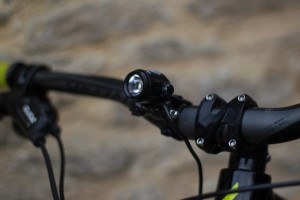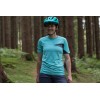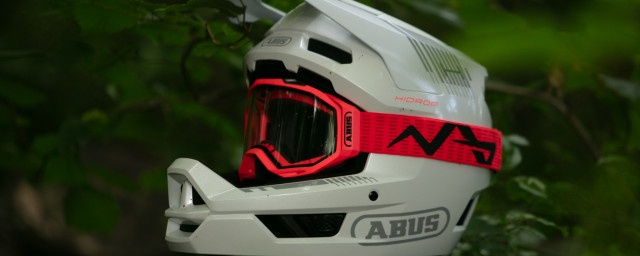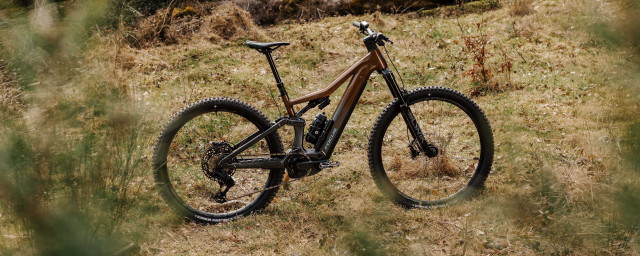
- Reflex+ tech works very well
- 3,300 lumens is plentiful
- Neat package with no external cables needes
- Charge port cover needs a re-think
- Stem mount is an additional cost
- Premium price
The MaxXx-D MK11 sits second in Exposure Lights range, with just the range topping Six Pack above it. The MaXx-D offers 3,300 lumens when using the clever Reflex technology and some great battery life to boot. It's a relatively small package that packs a real punch.
- Review - USE Exposure Six Pack MK9 front light
- Review - Specialized Chisel Comp X1 cross-country hardtail
- Buyer's Guide to E-bikes - you need to know
The 3,300 lumen MaXx-D is a competent night ride partner, it throws plenty of light out in front of you, its easy to use and features Reflex+ technology that optimises light brightness depending on your speed and actions on the bike.
When in Reflex+ mode the light will dim and brighten depending on your movement. Reflex isn't new, its been on Exposure lights for a few years now. But the whilst the old Reflex tech interpreted gradient, temperature and acceleration data to adjust the brightness to suit the conditions, the new Reflex+ also detects any period of inactivity and automatically dims the light to save power. In practice, whilst stopped or climbing/moving slowly on a fire road the light dims right down, then brightening immediately as I sped up to go downhill or started to move the bars more on a technical climb. Check out the video below to see the difference in lumen output.
Reflex+ needs no set up really, it calibrates itself for the first 15 minutes of use calculating your riding style. When using the feature you'll be treated to 3,300 lumens on the downs (rather than a max of 2,500 from a non-reflex mode), plus battery saving when riding slowly and low light is adequate. The light remembers your riding style and implements it immediately on your next ride. This feature works very well indeed, with Reflex programmes pumping out a maximum of 3 hrs of Reflex+ lighting, more than adequate for most night rides. At its lowest power in a Reflex+ mode the light is dim but totally adequate for climbing at slow speeds.
The beam emitted from the four LED's of the MaXx-D is plentiful, it doesn't cover as much area the Six Pack but it is by no means dark! The trail is well illuminated with the sides of the singletrack covered too. I paired this light with the 1,500 lumen Exposure Diablo on my helmet for top notch night time visibility. Above is the light on full chat at 3,300 lumens. There are 10 available programs or modes, the first three are Reflex+ modes whilst the others emit constant beams.
There is s a small LED display on the rear which with one press, when the light is off, displays battery life. When the light is on (double click the button) this same display shows the mode selected followed by the 'run time' left with additional lights to quickly indicate if power is low.
One of my only problems with the MaXx-D was the rubber charging port cover which was tricky to close, needing firmly pressing and wiggling around to ensure the flexible rubber stayed put over the port.
At 331g the weight of the light is totally acceptable given the fact that it houses the battery with no external cabling needed. In the box you'll also get a sturdy metal bar clamp (fits both 31.8 and 35mm bars) which is super tough. It is a little fiddle to get set up, altering the height of the beam means undoing the clamp with an Allen key first and then spin the mount on the bars. The flip side to this faff is that once it is on and in the correct position, its small and neat meaning that you probably won't feel the need to remove it from your bars until spring arrives. I'd recommend checking out the stem bolt mount, it's an additional £25 but it's a worthwhile addition to centre the light on the bars.
Charge time is shorter than the bigger Six Pack at 9hrs from flat rather than 12. Exposure says that the charge time has been decreased by 35% for the MK11 version of this light and the light now also comes with a USB style charger which is much better than the chunky three pin chargers of old.
The Exposure MaXx-D is a solid light choice, it has plenty of power and lumens and saves some weight, bulk and pennies over the Six Pack. As with all Exposure lights, you get a high quality item that will last more seasons of night riding than you'll probably want to contemplate. In terms of whether to splash out on the Six Pack, it comes down to a question of where you want the big lumens rather than price. I paired the MaXx-D with a more expensive and powerful Diablo (1,500l) but found that the smaller Axis (1,150l) was a good match to use with the Six Pack, the focused beam of light still visible when used with the Six Pack. The powerful Six Pack really is a thing to behold but the wide beam of light from the Diablo is a help when cornering on more technical trails, paired with the MaXx-D.
Six Pack + Axis = £650 and 5,900 lumens
MaXxD + Diablo = £595 and 4,800 lumens

















2 comments
I have tried many lights across various price points as I love mtn biking in the dark! This is easily the best light I have used and when I had a problem exposure were great at sorting it out. Agree the charging port needs to be improved. Go for the Joystick (got a purple one for £85) as your helmet light (and road bike light and general torch) and boom dark becomes light which is handy as there are no street lights where I live. Not cheap but as my nan says buy cheap buy twice!